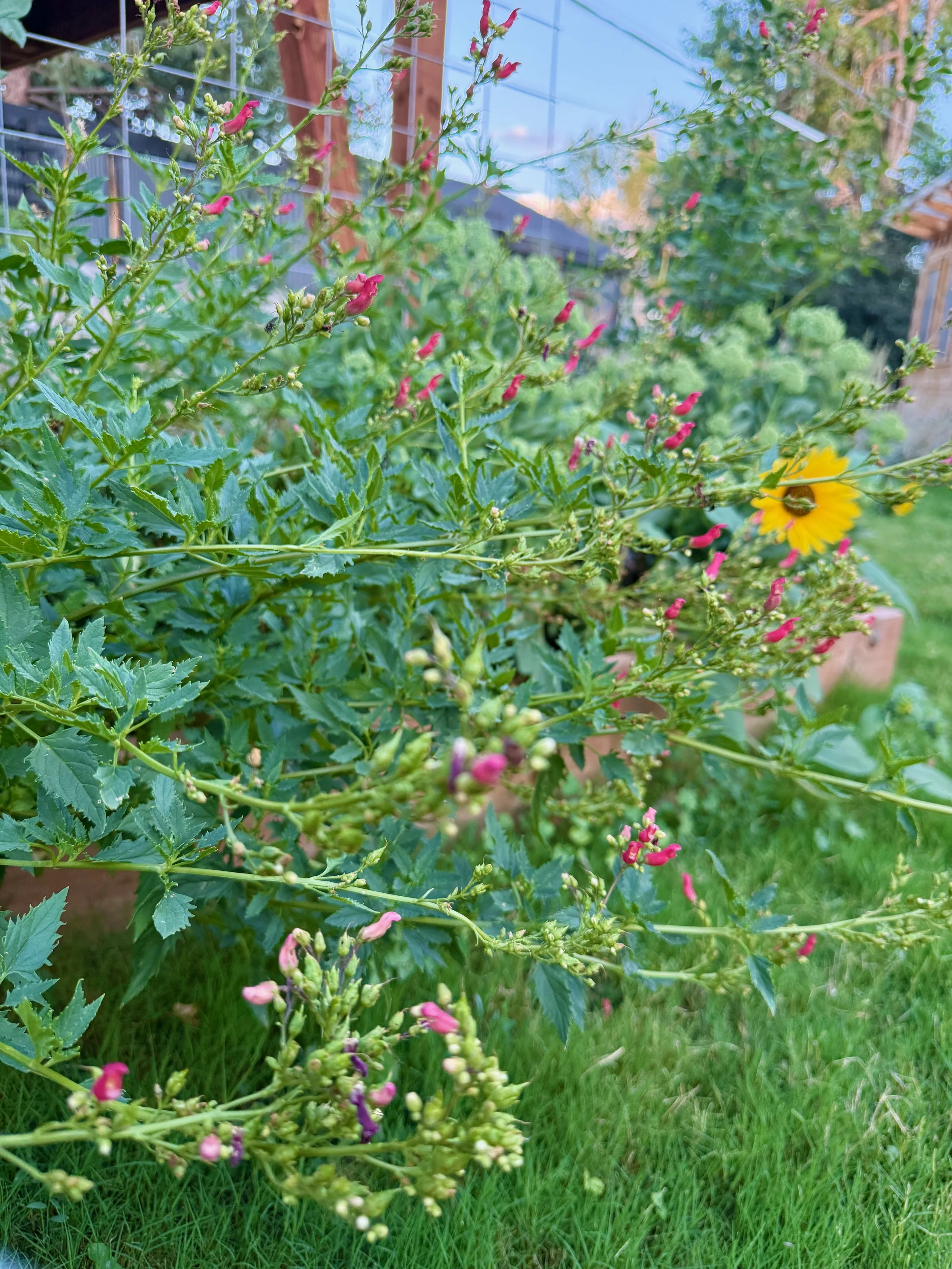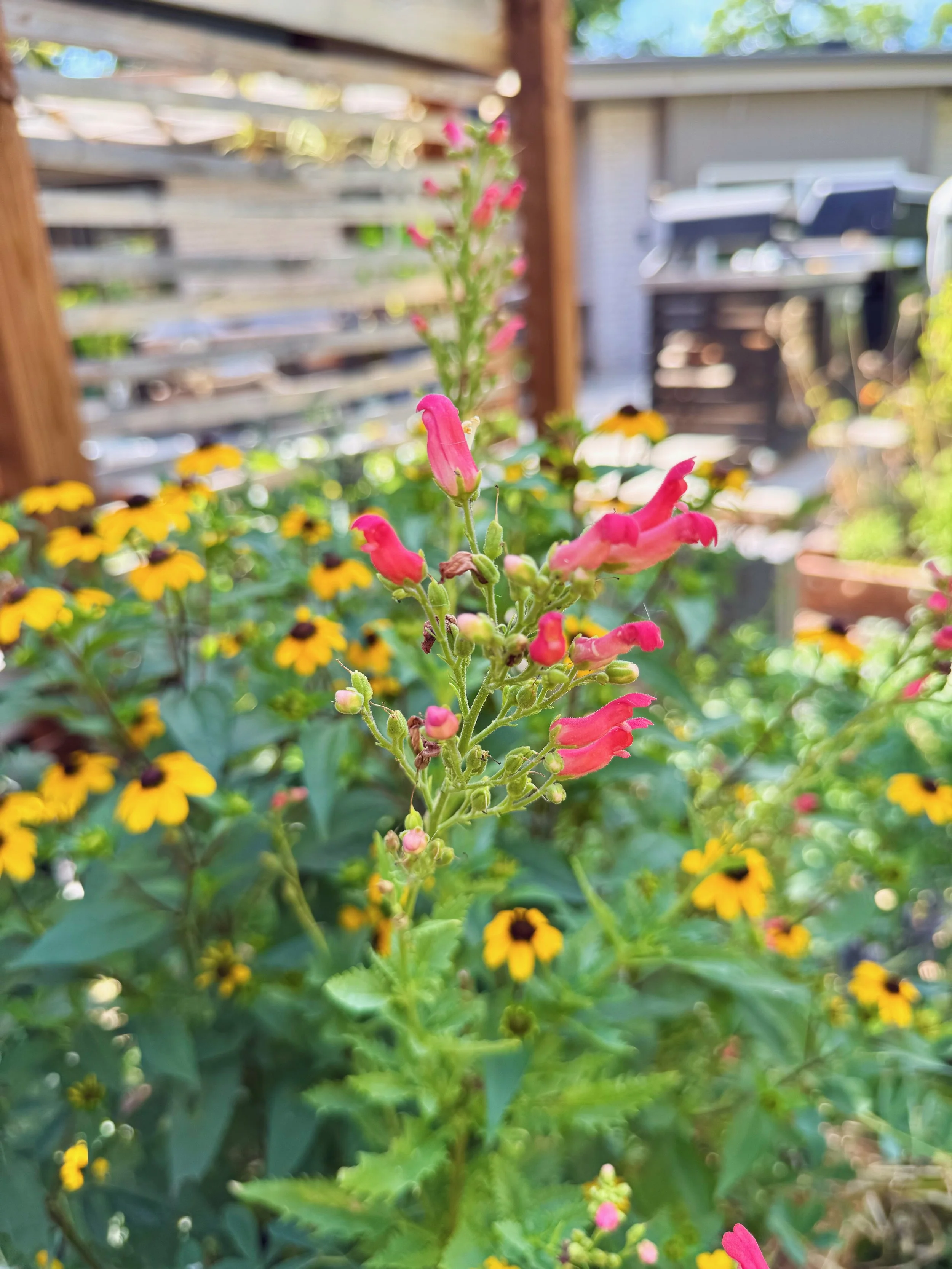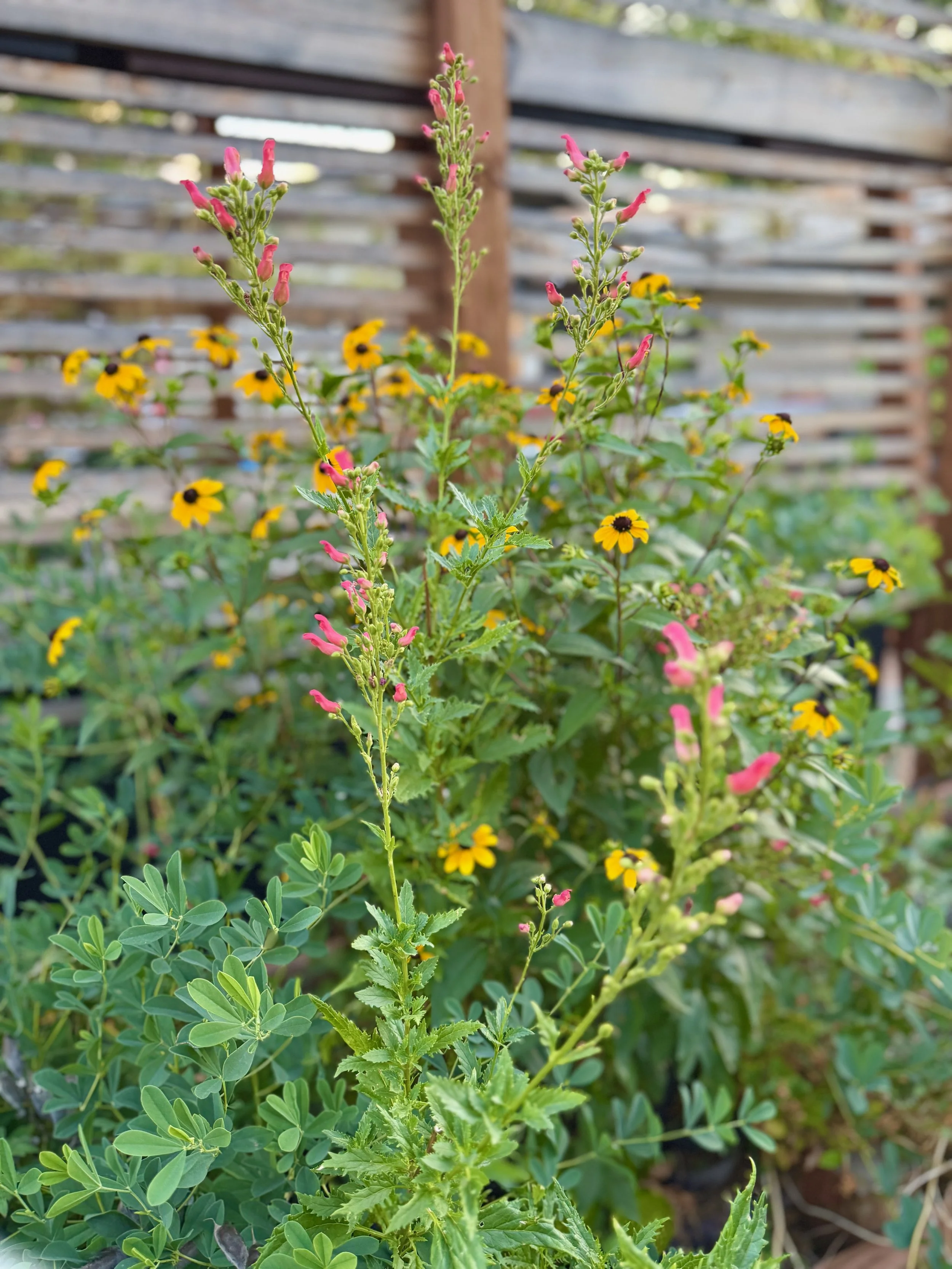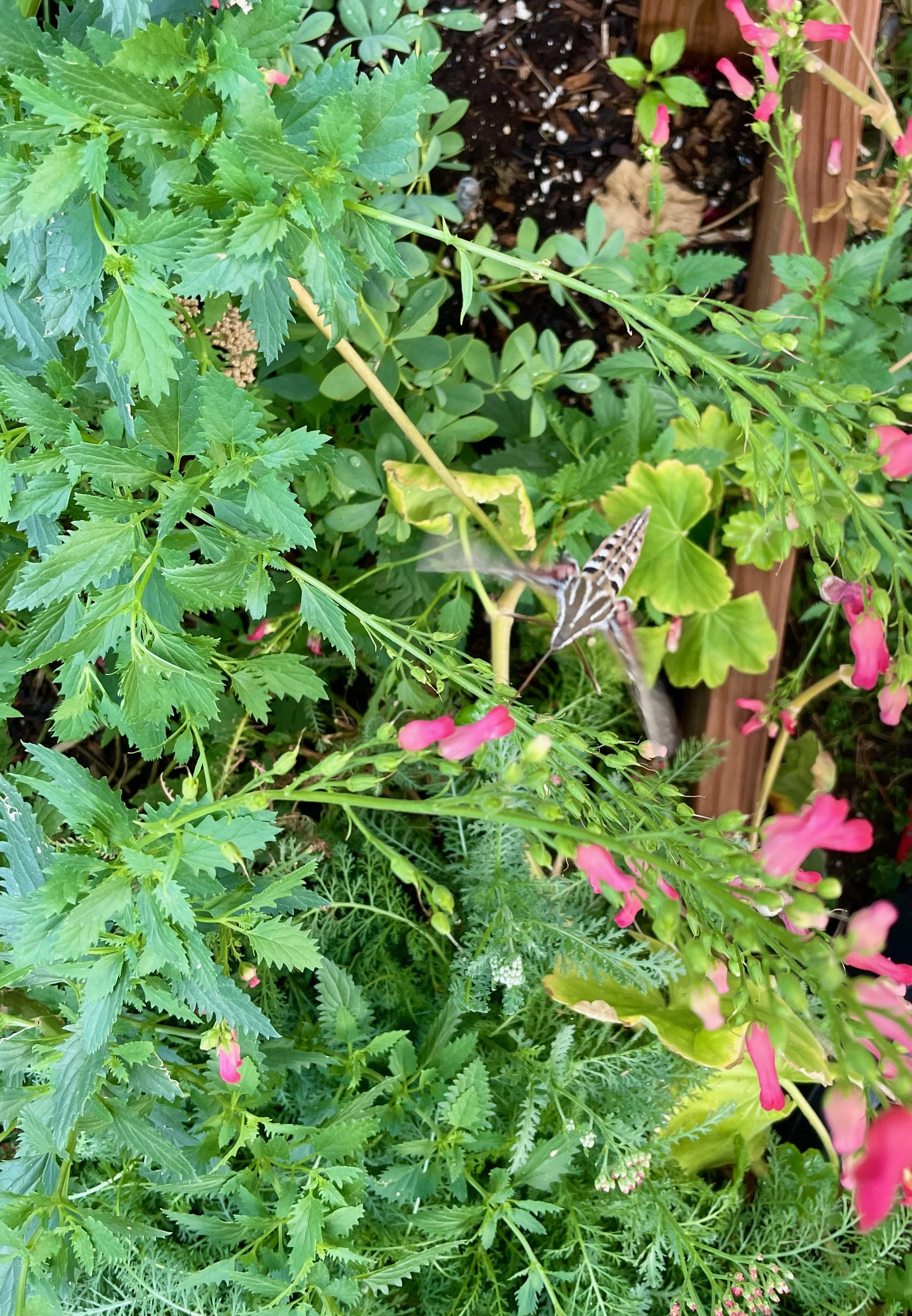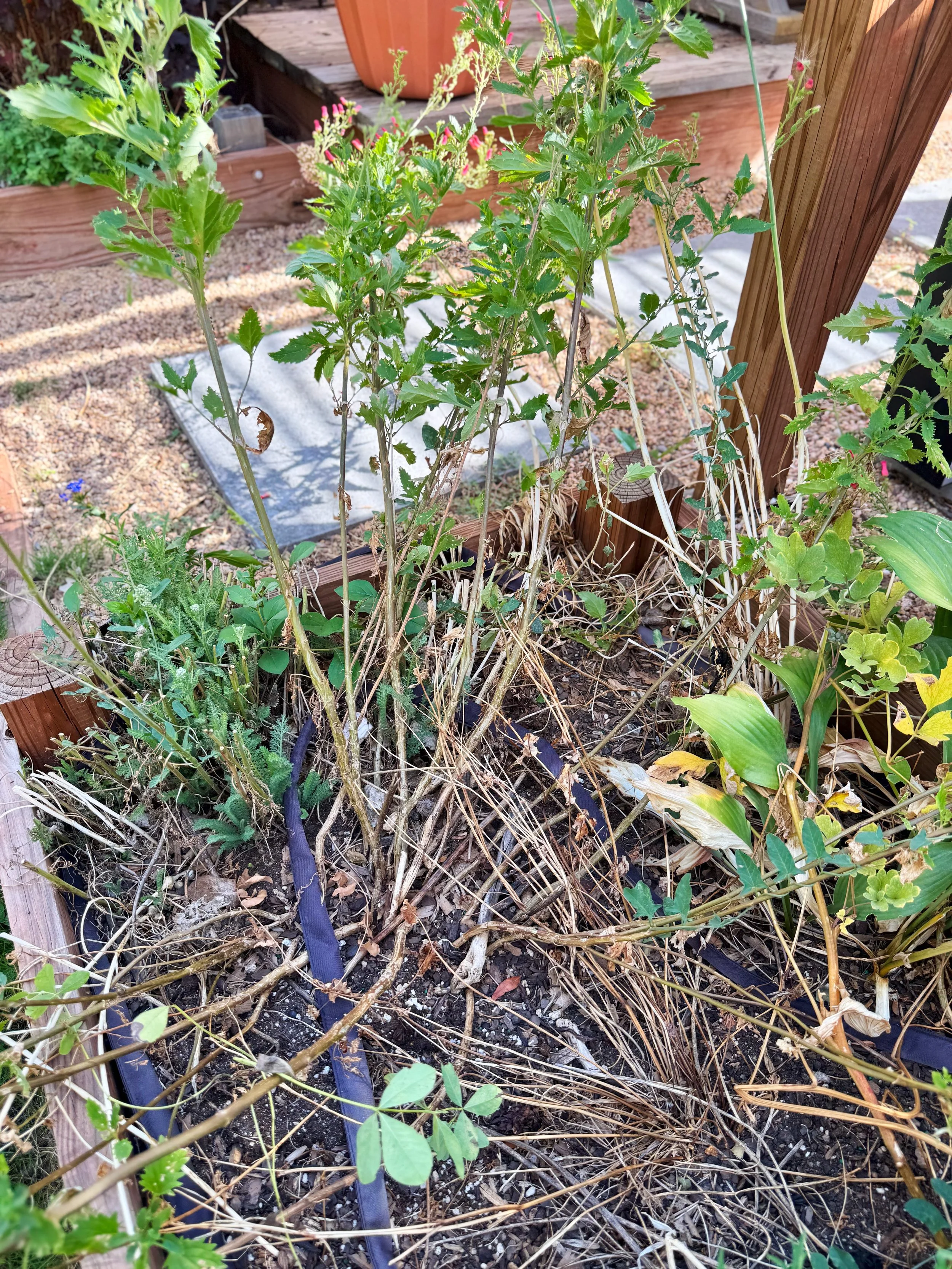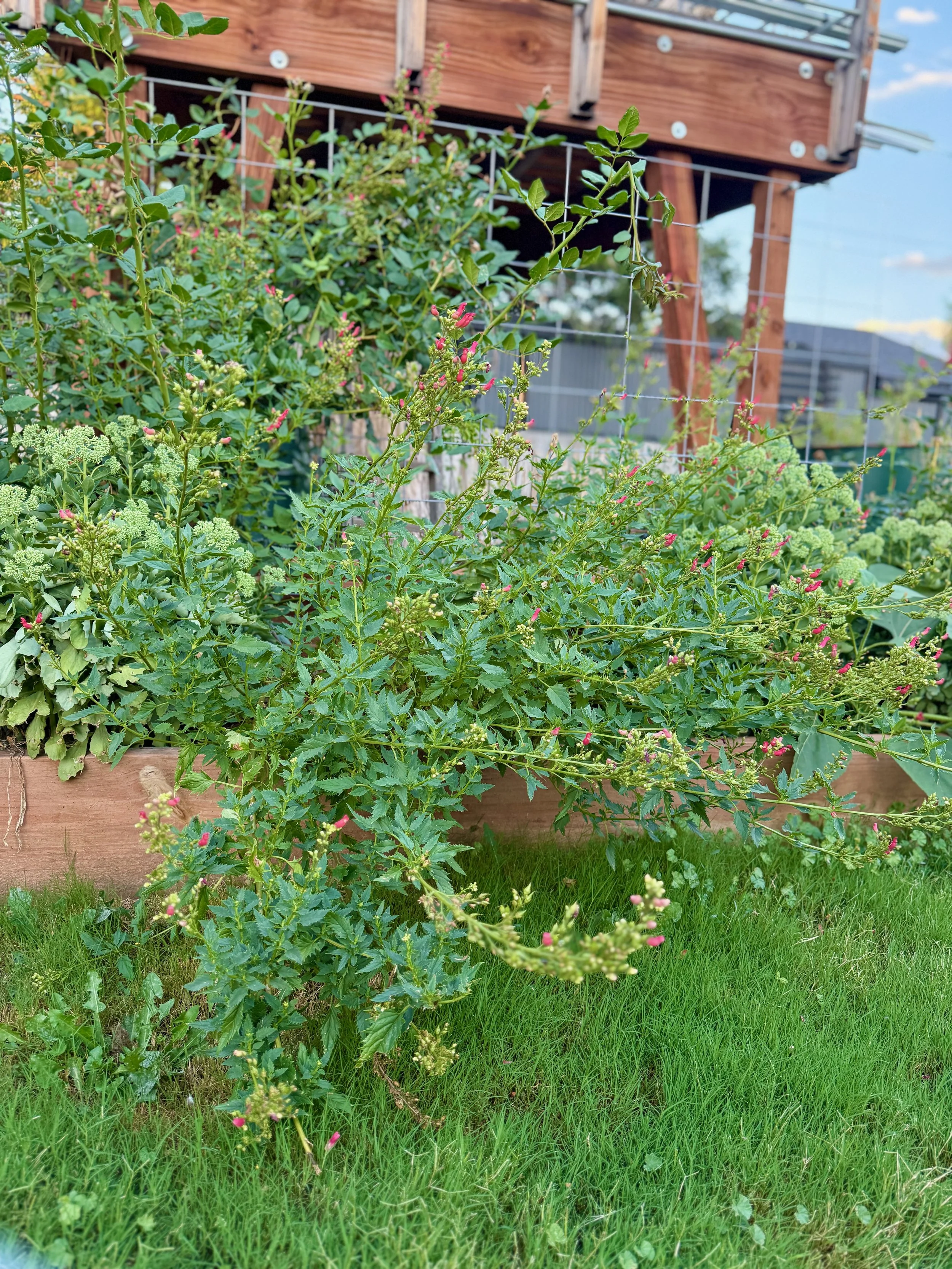Plant This!
Red Birds in a Tree
Scrophularia macrantha
Red Birds in a Tree is Irresistable to Hummingbirds
There is a delightful little garden center not too far from me, and it has the most unusual plants. It’s not the place to go for boring plants, nor is it the place to go for cheap plants. But when I need inspirational, unusual, or interesting plants — or just to have a good wander — that’s where I go. And a few years ago, on just such a trip, I found what is now my favorite plant: Scrophularia macrantha, poetically known as Red Birds in a Tree. Since I had never heard of it, I only bought three plants.
NOTE: when my budget allows I always buy and plant plants in threes. That way if they work well I have more than one. And if the pollinators love them, they have more plants from which to choose. It’s a win-win for everyone! Read more here!
They were wee little plants, but I stuck them in a bed with some Hardy Geraniums and Baptisia australis. And I just watched… I chose them because the tag said they were great for hummingbirds, and that was not a lie!
If you plant it, they will come!
Scrophularia macrantha is a rare plant in the wild, growing only in three isolated places in southwestern New Mexico: Neeling Nun Mountain, Cook’s Peak, and the Mimbres Mountains. It was introduced as a commercial plant by David Salman, the founder of High Country Gardens. Salman recognized its beauty with spikes of red flowers which hummingbirds love. And as a drought-tolerant, heat-tolerant, cold-tolerant plant with a long bloom time — July through first frost — it works well in many gardens in North America. Scrophularia macrantha is also a Plant Select choice.
My first little plants have grown and flourished, and I have since added more to my collection. You can buy it online at High Country Gardens, though it often sells out pretty quickly.
Plant of the Week: Scrophularia macrantha
USDA Zones: 5-10
Moisture: Low
Sun exposure: Sun to part-shade
Tips for Growing Scrophularia macrantha
Plant with Hardy Geraniums
This plant gets tall and kind of lanky. I have experimented with giving it the Chelsea Chop — cutting it back by about half at the end of May. This does lead to bushier plants, but they still get pretty tall. The base of the plants feels very bare, so I have found that they pair beautifully with hardy Geraniums. Planted close together, the Geraniums fill in and cover the more bare base of the Scrophularia, and then the Scrophularia spikes tower above. It’s a winning combination!
Watch for Wildlife
Hummingbirds and Hawkmoths seek out Red Birds in a Tree, so plant it where you can watch from a short distance. I often see both feasting in the evening together along with bumblebees and other insects. As a result, pairing Red Birds in a Tree with other plants that have similar flower shapes like Nicotiana, Monarda, Aquilegia, or Lobelia provides a banquet of diverse food sources for hummingbirds and insects that prefer tube-shaped flowers.
Water Regularly
While it is drought-tolerant once established, it needs regular watering to get established — really, for the first year or two. And I do give my plants a good layer of fresh compost every year. That provides a little nutrition and also slows evaporation from the soil, too.
Save the Stems
As a herbaceous perennial, Scrophularia macrantha dies back completely in the winter. I usually cut the stems down in the fall to about 8 inches tall just to keep the bed tidier over the winter. But the stems dry beautifully and are hollow, so they are great for bees and other egg-laying insects. So leaving them at about 8 inches tall means that in the spring, there will be ample places for bees to lay their eggs.
at the close…
I have had those first plants for 5-6 years now, and they still look strong and healthy. Some note that Scrophularia macrantha is a short-lived perennial, but in my garden so far it has done very well. Indeed, this summer I even found one in another part of the garden — clearly self-seeded! I am thrilled!
Subscribe now so you never miss a thing!


